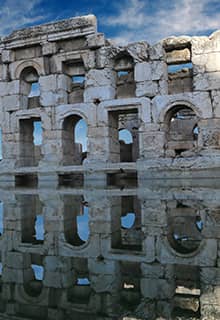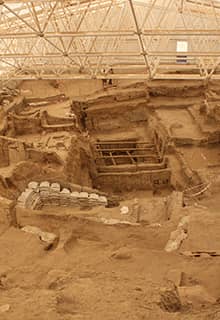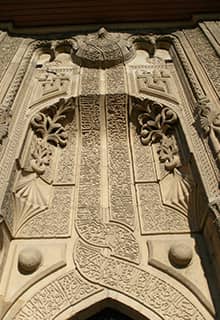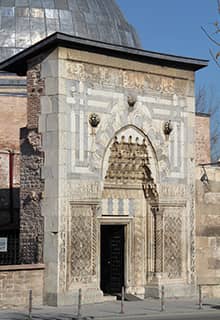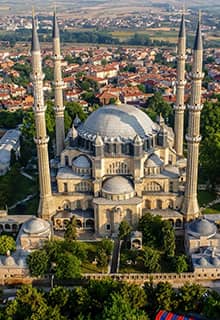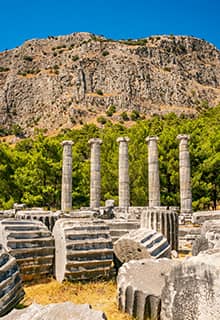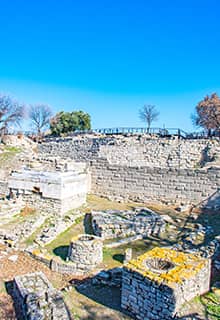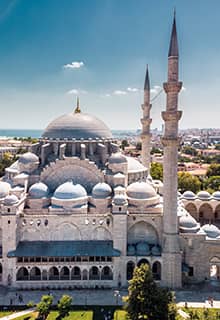

architectural heritage
in Türkiye
Çatalhöyük – One of The World’s Oldest City
The architectural heritage of Türkiye extends way back to 7400 BCE at Çatalhöyük. This remarkable site is considered one of the earliest urban settlements of the world. Çatalhöyük’s cityscape was characterised by small rectangular-shaped houses, which were built side by side without any streets in between. This meant, rather strangely, that homes were accessed by way of the roof from where a with a wooden ladder and that the rooftops had to function as streets, providing people with the means to move around within the settlement.
Troia - Innovative design alongside most famous battle in Ancient History
Likewise, in Troia we can discern innovations in architecture with one of the earliest examples of megaron (plural megara) type buildings dating back to the 3rd millennium BCE. Megara are usually rectangular-shaped spaces with an entrance on the front side of the building that opens onto a porch. It is one of the most common architectural types in the ancient world that was later often employed in Greek Temples.
Priene - The best-preserved Classical City of Ancient Times
Priene affords the opportunity to fully imagine the cityscape of a 4th century BCE ancient city, in its heyday at one of the most exciting periods of the ancient world. The archaic settlement of Priene was relocated in 350 BCE probably due to the silting up of the ancient Meander River. The urgent need to rebuild the city give the planners an opportunity to develop the city in the Hippodamian (grid) plan Today the grid plan of the city is widely regarded as being far ahead of its time.
Roman Era in Architecture
The majority of the ancient architectural remains of Türkiye are from the glorious Pax Romana period, the 1st and 2nd centuries CE, when a relatively long period of peace existed in the region and which allowed cities to flourish and embark on major adornments to the grandeur of their urban architecture by adding monumental buildings such as bathhouses, gymnasia, fountains, and temples as the result of luxury and prosperity. These buildings, in fact, were often donated to the cities by rich aristocratic benefactors.
Seljuk Architecture
The Seljuks came to Anatolia in the beginning of the 11th century CE and when they established political stability at the end of the 12nd century, under the reign of Kılıç Arslan II, the Seljuk State set out on a major project to improve the infrastructure and communication within their borders by building a series of caravanserais in order to establish a safe commercial route that connected cities. A caravanserai functioned as a mediaeval fortress hotel for merchants and travellers and were built at intervals of one day’s travel along the most important commercial routes. They not only offered refuge with board and lodging for the traders but also for their pack animals and goods. The caravanserais were guarded by the army of the government. The safe haven that they provided meant that trade prospered throughout the 13th century. Thus, caravanserais are considered to be the most powerful political and economic architectural symbol of the Seljuk Period.
Caravanserais were not the only architectural projects undertaken by the Seljuks. They also constructed public buildings such as mosques, madrasas (which were educational and charity complexes), mausoleums, bridges and dervish lodges. These buildings took their inspiration from many traditions of the cultures that inhabited Mesopotamia and Anatolia but the result of this synthesis is something authentic and original, a purely Seljuk style.
Deeply influenced by Islamic Sufism, mysticism and shamanism, these buildings are decorated with motifs that are inspired by the concept of the universal order. Geometrical patterns, that represent the cosmic order, are carved into the stone usually around the doors of the buildings in order to accentuate that the passage from outside to inside is a metaphorical mirror of the journey from the macro to the micro cosmos. The “star system” or the “vegetative decorations” are the most famous patterns of this detail and are sometimes described as the flow of the flowers.
The best urban examples of Seljuk architecture can be found in central and eastern Anatolia but especially in the capital city of Seljuks, namely Konya. In this iconic city Karatay Medrese, İnce Minaret Medreseand Aladdin Mosque are considered the best examples.
Ottoman Architecture
Following the reign of the Seljuks, dozens of Turcoman dynasties (Beylik) started to appear in Anatolia in the 13th century. One of these dynasties, known as the sons of Osman, would later become the Ottoman Empire, one of the most powerful and long-lasting empires not only of Anatolia but also of the whole world.
Ottoman architectural style is deeply influenced by both Byzantine and Seljuk architecture. Especially the proliferation of domes defining the spaces beneath is considered to be a reinterpretation of Byzantine and Seljuk traditions into a more authentically Islamic style. Although the earliest mosques were mostly cubic buildings topped with a single dome, later architects seemed to search for ways to expand the spaces. The Ulucami in Bursa serves as a representative example for the multi-dome approach.
Ottoman architecture peaked in the 16th century largely thanks to the master architect Sinan, who managed to balance the exterior grandeur of his designs with enriched interior decorations. The balance of light and dark, the empty space and richly ornate decorations as well as the balance between straight and curved architectural lines brought the tradition of classical Ottoman mosques to its architectural climax. Although the Selimiye Mosque in Edirne is his masterpiece, he has many magnificent works in İstanbul such as the Süleymaniye and Mihrimah Sultan Mosques or the Kılıç Ali Paşa complex.

